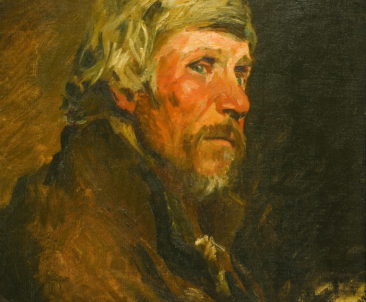

February 28, 1831 in the family of the Voronezh landowner Nikolai Ge was born a son who became a famous Russian painter and draftsman. Nikolai Nikolaevich’s mother died three days after the birth of the child, and the boy was given up for education in the village, but at the age of ten his father takes Nikolai Ge to Kiev, and he goes to the First Kiev Gymnasium.
While living in St. Petersburg and studying at the mathematical faculty of St. Petersburg University, Nikolai Ge persistently copied pictures in the Hermitage and dreams of starting his studies at the Academy of Arts. In 1850 his dream was fulfilled – Nikolay Ge entered the studio of an academician, professor of painting, a famous Petersburg artist Peter Basin.
In 1857, for the work “Saul at the Endor magic”, the artist receives a Grand Gold Medal, which gave him the right to travel to Europe. Nicholas Ge works a lot, preferring historical and mythological subjects.
At the end of 1869 the artist returned to Russia and entered the cultural life of the capital, becoming one of the organizers and leaders of the Association of Mobile Art Exhibitions created in 1870 (TPHV). Ge painting has undergone dramatic changes. He refused not only from the canons of academicism, but also from the desire for historical concreteness, which so impressed his viewers.
In 1875, Ge permanently left Petersburg and moved to Ukraine, where he bought a small farm in the Chernigov province. In his works of the late period, religious themes predominate. However, the artist painted and portraits. Among these works is the painting in the collection of the Voronezh Regional Art Museum named after IN Kramskoy. The portrait of the peasant is distinguished by its simplicity and truthfulness, the artist’s philosophy of life is reflected in his painting – in the strictness of compositional and ascetic color solutions.
Religious painting of Nicholas Ge shocked by its realism contemporaries, many of his later works, such as the “Crucifixion” in 1892 were banned for display.